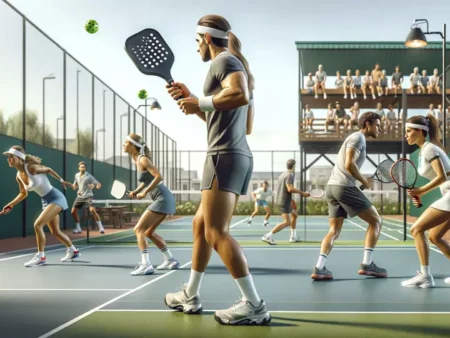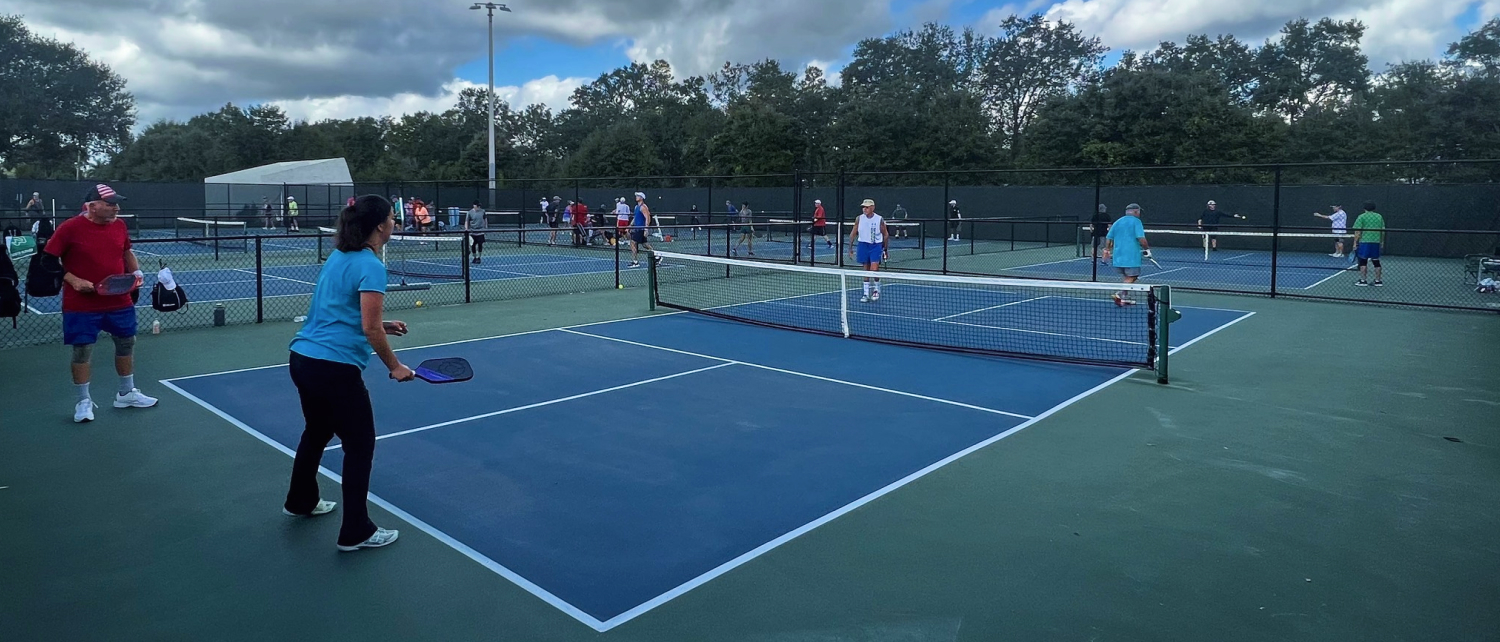Your cart is currently empty!

Pickleball, a dynamic and rapidly expanding sport, draws from the principles and play styles of traditional racquet sports such as tennis, badminton, and table tennis, and has ascended to remarkable popularity, establishing itself as the most rapidly expanding sport in the United States. Characterized by its straightforward regulations, minimal equipment requirements, and engaging gameplay, pickleball has successfully captivated a wide-ranging audience, from young enthusiasts to older adults, thereby enhancing its widespread allure. On the other hand, tennis, with its deeply entrenched global presence, storied past, and comprehensive network of facilities, confronts an unexpected and novel competitor.
This emergence of pickleball has ignited a fascinating discourse within the community of racquet sports enthusiasts, prompting an examination of how these sports can coexist and evolve. The interaction between the two sports highlights a pivotal moment in the evolution of recreational and competitive play, encouraging a reevaluation of traditional structures and the potential for innovation in engaging participants across generations. This shift represents not just a challenge but also an opportunity for both sports to adapt, thrive, and redefine their roles within the athletic and social landscapes, ensuring their relevance and vibrancy for years to come.
Competition for Courts
The remarkable surge in pickleball’s popularity has precipitated a notable trend: the transformation of traditional tennis courts into spaces suited for pickleball. This shift reflects the sport’s escalating appeal and its impact on the landscape of community sports facilities. However, this development has not been without its controversies. Tennis enthusiasts and community members have voiced concerns over the repurposing of these courts, which has sparked widespread discussions regarding the fair distribution of communal recreational areas and the safeguarding of tennis’s rich legacy. These conversions have become a focal point in the broader conversation about the evolving dynamics within racquet sports, underscoring a critical juncture where the need for flexible and innovative approaches to support both pickleball and tennis communities becomes evident.
As pickleball continues to draw new players and tennis maintains its dedicated base, the challenge lies in finding harmonious solutions that respect and celebrate the history and future potential of both sports. This situation calls for thoughtful dialogue and collaboration among stakeholders to ensure that public spaces cater effectively to the diverse preferences and requirements of all athletes, thereby fostering a more inclusive and vibrant sporting environment.
Diversifying Facilities
As pickleball continues to captivate a growing legion of fans, tennis establishments are increasingly recognizing the financial benefits of diversifying their sports offerings to include pickleball. This strategic adaptation reflects a keen awareness of the changing sports landscape and represents an effort to capitalize on pickleball’s soaring popularity. By integrating pickleball courts alongside traditional tennis courts, these facilities can tap into a burgeoning market, potentially unlocking new streams of revenue and broadening their appeal to a more diverse clientele. This move not only aligns with current sports trends but also offers a practical solution for boosting engagement and utilization rates within these complexes.
Nevertheless, the integration of pickleball into venues historically dedicated to tennis is not without its complications. This transformative shift prompts a deeper examination of how it might influence the future of tennis programming and the preservation of tennis’s rich cultural heritage. The essence of tennis, steeped in tradition and refined over generations, faces the possibility of being diluted as attention and resources might increasingly favor the newcomer. The challenge for those managing these facilities lies in achieving a delicate equilibrium between fostering the growth of pickleball and maintaining the integrity and legacy of the tennis community.
As this trend progresses, facility operators must navigate these waters with care, crafting strategies that honor the traditions of tennis while embracing the dynamic and inclusive spirit of pickleball. Crafting an environment where both sports can flourish side by side, respecting the heritage of one while promoting the inclusivity of the other, becomes paramount. This balancing act, while complex, is essential for ensuring that both sports can coexist harmoniously, enriching the athletic and social fabric of the communities they serve.
Changing Demographics
Pickleball’s significant appeal to senior players stands as a notable testament to its accessibility and lower physical demands compared to tennis, making it a preferred option for those seeking a sport that balances physical activity with social engagement. By offering a platform for older adults to participate actively in a sporting community, pickleball has played a pivotal role in promoting not just physical health but also mental well-being through the social connections it fosters. This demographic shift towards embracing sports that cater to participants across a broad age spectrum is reflective of a growing trend that prioritizes inclusivity and enjoyment in recreational activities.
The evolving preferences of sports enthusiasts necessitate both pickleball and tennis to consider adaptations that accommodate a diverse range of abilities and interests, ensuring they remain relevant and appealing. The profound implications of this shift are not to be underestimated, as both sports face the challenge of navigating the changing landscape of participant demographics. This involves a delicate balancing act of evolving to meet changing needs while preserving the unique characteristics and traditions that define each sport. Such adaptations are crucial for sustaining engagement and fostering a vibrant, inclusive community around these beloved racquet sports.
Social Aspects
The social advantages of pickleball stand out, especially due to its inclusive nature and the strong sense of community it fosters among players of all ages and skill levels. This welcoming atmosphere is one of the key factors that set it apart from tennis, a sport that, although it does cultivate community bonds, often places a greater emphasis on competition and requires a higher degree of skill to participate effectively. The distinction between pickleball’s open-armed approach and tennis’s more competitive edge highlights the unique cultures inherent to each sport. Moreover, pickleball’s community-building potential extends beyond the court, encouraging social interaction and connectivity among participants in various settings, thereby enriching the overall experience. This emphasis on social inclusivity and the formation of community networks not only enhances the appeal of pickleball but also contributes to a more engaged and cohesive group of enthusiasts. These contrasting social dynamics offer a fascinating glimpse into how each sport contributes uniquely to the fabric of community life, providing valuable opportunities for engagement, friendship, and mutual support among players.
Accessibility
Pickleball’s unparalleled ease of entry is dramatically transforming the traditional landscape of racquet sports. With its uncomplicated rules and the minimal equipment required for play, pickleball significantly reduces the barriers to participation. This has made it an exceedingly attractive option for a diverse range of individuals, encompassing those at every skill level—from complete novices to seasoned athletes. The sport’s accessibility extends beyond just the simplicity of getting started; it also includes the ease with which players can find enjoyment and a sense of achievement early on in their pickleball journey. This characteristic is a pivotal element behind pickleball’s swift and widespread adoption across communities, further contributing to its exponential growth. Such accessibility challenges longstanding sports like tennis to innovate and adapt, ensuring they remain appealing and accessible to a new generation of sports enthusiasts. Tennis, in response, is compelled to explore new ways to lower its own entry barriers and enhance its appeal, thus retaining its relevance and attractiveness to newcomers who might otherwise be drawn to the more accessible and community-oriented nature of pickleball.
The Global Perspective
Globally, the rise of pickleball is met with a unique blend of curiosity and enthusiasm, capturing the attention of sports enthusiasts and newcomers alike. Although it hasn’t reached the widespread international acclaim of tennis, the impressive growth trajectory of pickleball indicates a significant expansion of its influence, hinting at a future with a robust global footprint. This burgeoning popularity across various countries underscores not only the sport’s universal appeal but also presents numerous opportunities for cross-cultural interactions and the fostering of a rich, diverse global pickleball community. The potential for international tournaments and exchanges is vast, opening doors to an interconnected world where players from different backgrounds can share strategies, experiences, and friendships. This expansion enriches the pickleball landscape, promoting cultural understanding and unity through the shared love of the game, and sets the stage for pickleball to become a prominent fixture in the global sports arena.
Adaptation Strategies
Tennis clubs and organizations are navigating this shift through various adaptation strategies, including the integration of pickleball into their programming and the development of hybrid facilities. These initiatives reflect a recognition of the changing landscape and a commitment to serving the evolving needs of sports enthusiasts.
The coexistence of tennis and pickleball presents both challenges and opportunities. As communities navigate the practical and cultural implications of this dynamic, the potential for innovation and collaboration looms large. The future of racquet sports lies in embracing change, fostering inclusivity, and finding a harmonious balance that honors the legacy of tennis while celebrating the rise of pickleball.
The evolving relationship between tennis and pickleball warrants further research, particularly in understanding the long-term impacts on physical infrastructure, community dynamics, and the development of both sports. Exploring strategies for sustainable growth and mutual enrichment will be key to ensuring their thriving coexistence.
by



